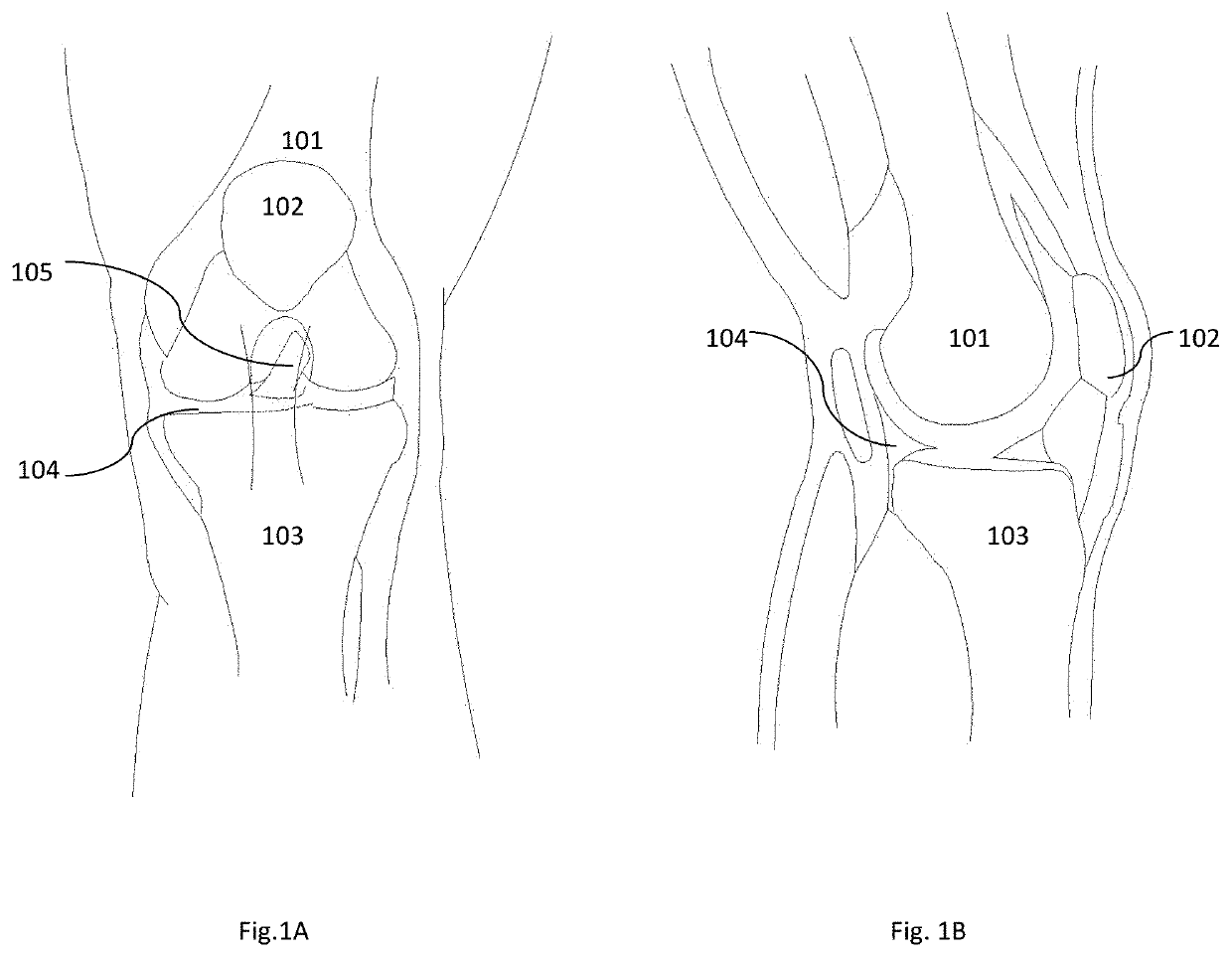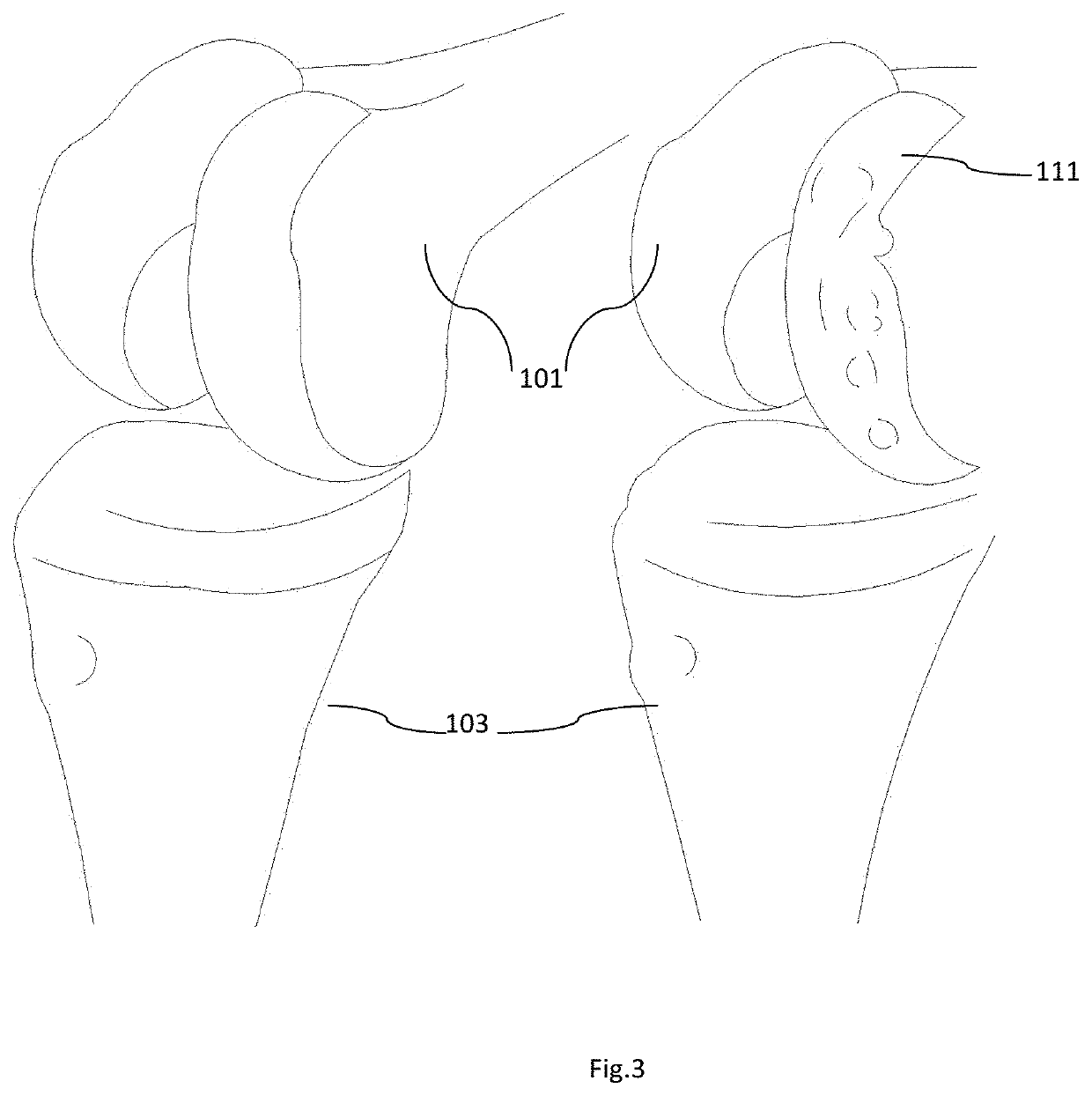Method of Performing Restoration of Knee Surgery
a knee joint and knee replacement technology, applied in the field of knee joint surgery, can solve the problems of common knee replacement, osteoarthritis of the knee, and the surface of the knee joint is damaged, and achieves the effects of minimizing the learning curve of surgeons, reducing the length of incisions, and reducing the risk of injury
- Summary
- Abstract
- Description
- Claims
- Application Information
AI Technical Summary
Benefits of technology
Problems solved by technology
Method used
Image
Examples
Embodiment Construction
[0030]A joint generally consists of two relatively rigid bony structures that maintain a relationship with each other. Soft tissue structures spanning the bony structures hold the bony structures together and aid in defining the motion of one bony structure to the other. A normal knee anatomy is shown in FIG. 1. The point of articulation of the femur with the tibia defines a knee and structures like the distal femur (101), the proximal tibia (103), the patella (102), and the soft tissues, including ligaments, within and surrounding the knee joint. The knee is divided into three parts namely; medial (the inside part of the knee), lateral (the outside part of the knee), and patellofemoral (the joint between the kneecap and the femur). “The medial compartment comprises the medial joint surfaces of the femur (101), tibia (103), and the meniscus (104(b)) wedged there between. The lateral compartment comprises the lateral joint surfaces of the femur (101), tibia (103), and the meniscus (1...
PUM
 Login to view more
Login to view more Abstract
Description
Claims
Application Information
 Login to view more
Login to view more - R&D Engineer
- R&D Manager
- IP Professional
- Industry Leading Data Capabilities
- Powerful AI technology
- Patent DNA Extraction
Browse by: Latest US Patents, China's latest patents, Technical Efficacy Thesaurus, Application Domain, Technology Topic.
© 2024 PatSnap. All rights reserved.Legal|Privacy policy|Modern Slavery Act Transparency Statement|Sitemap



